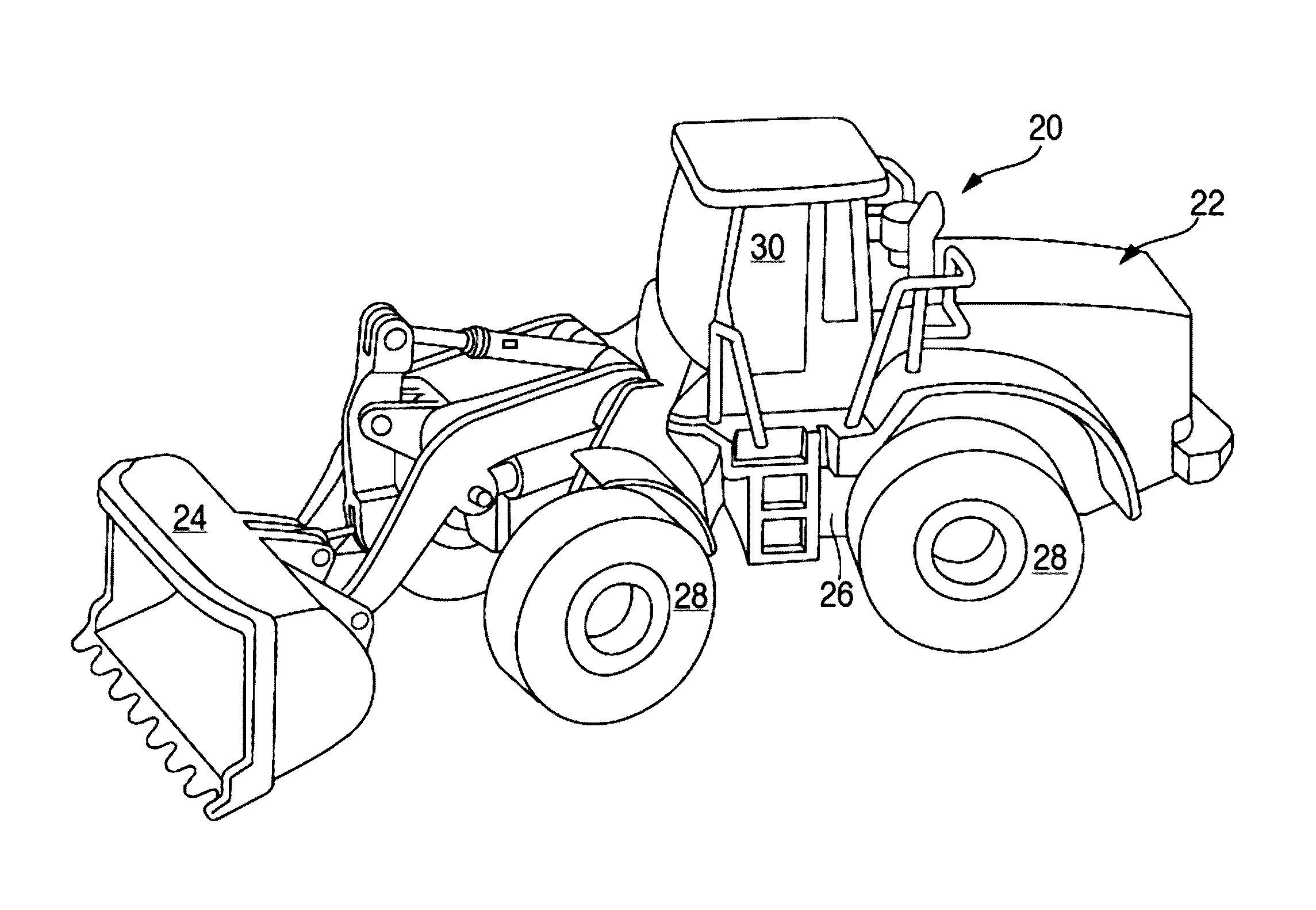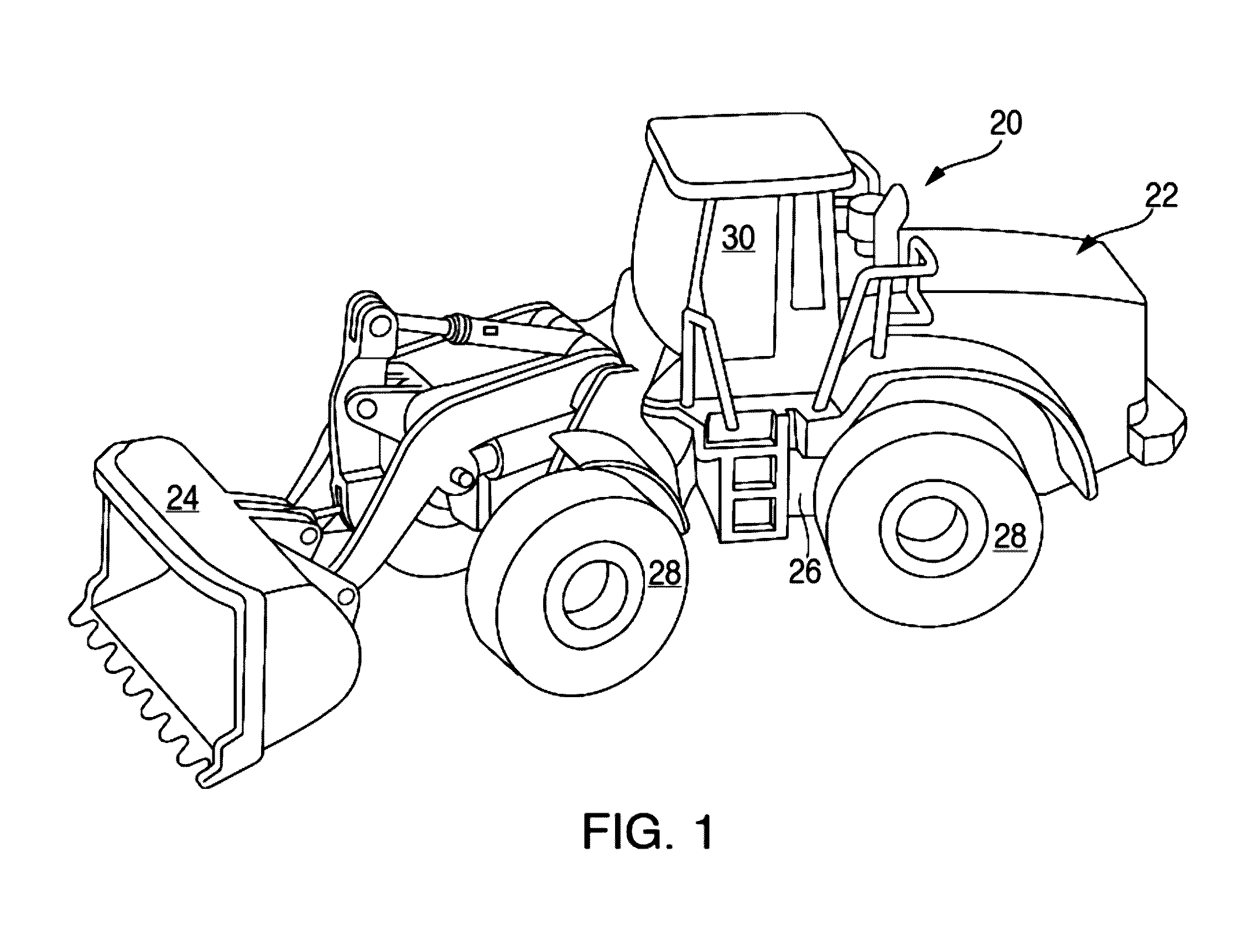Turbocharger Compressor Anti-Surge Engine Control Strategy and Method
a turbocharger and compressor technology, applied in the direction of electric control, combustion engines, speed sensing governors, etc., can solve the problems of further reduction of impeller speed, affecting the efficiency of turbochargers, and affecting compressor efficiency
- Summary
- Abstract
- Description
- Claims
- Application Information
AI Technical Summary
Benefits of technology
Problems solved by technology
Method used
Image
Examples
Embodiment Construction
[0017]The present disclosure relates to powertrains and, specifically, to one or more compressors that are associated with one or more turbochargers used on an internal combustion engine. More specifically, the present disclosure describes various embodiments for control strategies that assume or affect normal engine operation, especially during conditions that are known to cause the one or more compressors to surge during engine operation. In one proposed solution, for example, for a wheel loader application, includes maintaining a mass flow of air through the compressor above a surge limit by, during an engine speed and load drop, maintaining the engine speed higher.
[0018]In general, during operation of a turbocharged engine, the turbine extracts energy from the exhaust and drives the compressor. When load is suddenly reduced, the exhaust energy drops and the turbine no longer has the power to drive the compressor to keep the speed up, thus the flow rate thru the compressor drops ...
PUM
 Login to View More
Login to View More Abstract
Description
Claims
Application Information
 Login to View More
Login to View More - R&D
- Intellectual Property
- Life Sciences
- Materials
- Tech Scout
- Unparalleled Data Quality
- Higher Quality Content
- 60% Fewer Hallucinations
Browse by: Latest US Patents, China's latest patents, Technical Efficacy Thesaurus, Application Domain, Technology Topic, Popular Technical Reports.
© 2025 PatSnap. All rights reserved.Legal|Privacy policy|Modern Slavery Act Transparency Statement|Sitemap|About US| Contact US: help@patsnap.com



